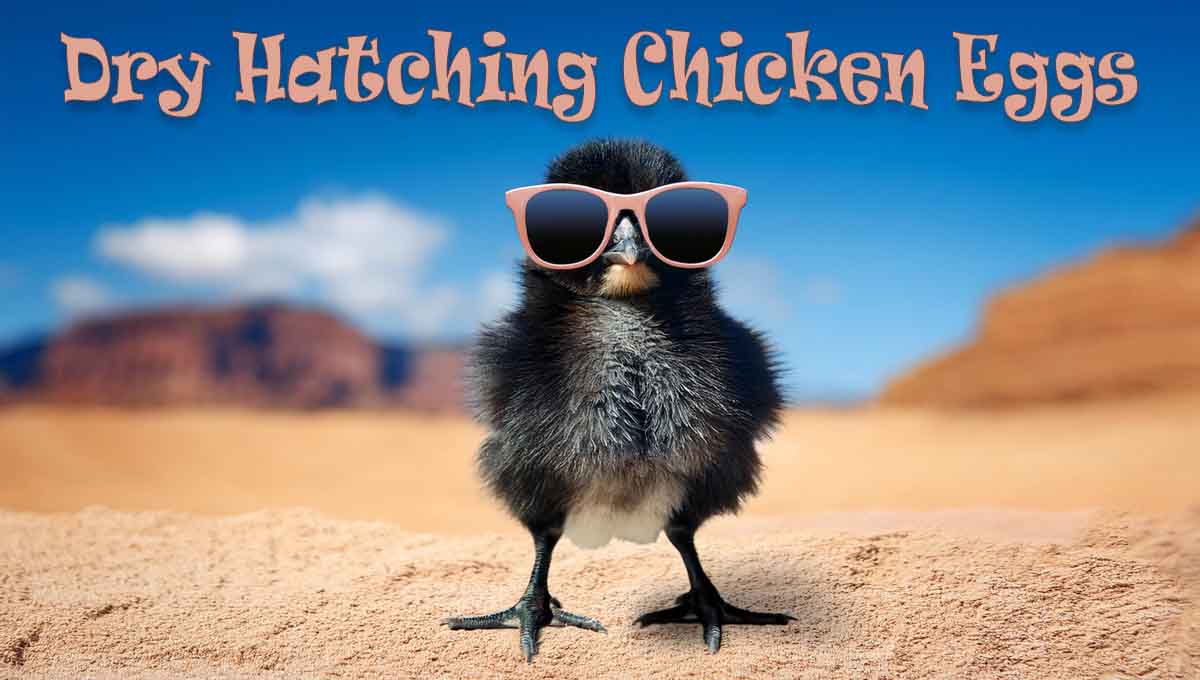Dry hatching is a method of incubating eggs with minimal humidity throughout most of the incubation period. This approach contrasts with traditional methods, which often recommend higher humidity levels. Dry hatching has gained popularity, particularly in areas with wet climates or for unstable incubators, but it’s important to understand both the scientific evidence and social discussions surrounding the practice.
Does Science Back Dry Hatching?
The fundamental concept of dry hatching is to allow eggs to lose moisture naturally, which promotes proper air cell development and helps the chick absorb the yolk before hatching. Humidity levels play a critical role in this process, and controlling moisture loss is key to a successful hatch.
Scientific studies emphasize that humidity is one of the most important factors affecting incubation. A study titled Effect of Incubation Dry-Bulb and Wet-Bulb Temperatures highlights the importance of temperature and humidity control during incubation. The research found that the balance between dry-bulb (temperature) and wet-bulb (humidity) conditions is essential for proper chick development, and managing moisture loss ensures that eggs reach the right moisture content at the time of hatching (ResearchGate).
In line with this, the Texas A&M AgriLife Extension provides clear guidance on the importance of humidity during incubation: “Humidity levels during incubation influence hatchability, and improper humidity can cause chicks to hatch prematurely or fail to hatch at all” (Texas A&M AgriLife).
Challenges and Considerations in Dry Hatching
One of the primary risks of dry hatching is ensuring that eggs do not lose moisture too quickly, which could lead to unhealthy chick development. According to the Mississippi State University Extension “A sign of low humidity is sticky embryos during pipping and hatching that results in embryos not being able to turn themselves in the shell and complete the act of pipping and detaching themselves from the shell. Low humidity also results in short down on the chicks, malformed, malpositioned, weak, and small chicks. Low humidity contributes to (but is not wholly responsible for) spraddlers, star gazers, and those that cannot stand, walk, or orient themselves well enough to reach food and water.” (MS STATE EDU)
In particularly humid environments, dry hatching might be beneficial but requires close monitoring. Mississippi State University Extension explains: “The desired egg weight loss during incubation caused by water evaporation is about 12 percent. If humidity during incubation is kept too high, adequate water evaporation from the egg is prevented. The chick can drown in the water remaining in the shell at hatching. A dried coating around the chick’s nostrils and beak indicates that drowning was likely.” These findings highlight the importance of balancing humidity levels to prevent complications. (MS STATE EDU)
Additionally, incubators with unstable temperature or humidity control can pose challenges for both dry and wet hatching. Fluctuations can cause eggs to lose or absorb moisture inconsistently, leading to poor hatch outcomes. Some poultry keepers recommend using forced-air or fan-assisted incubators to maintain stable conditions.
The Social Perspective: Debates and Popularity of Dry Hatching
While scientific studies provide evidence that supports the benefits of controlled humidity, the dry hatching method has sparked debate within the poultry community. On one hand, many poultry keepers in humid climates swear by the technique, arguing that it helps reduce the risk of excess moisture in eggs, leading to healthier chicks. Hobbyists and small-scale farmers often share success stories on forums like Backyard Chickens, where they describe improved hatch rates when using dry hatching methods. This method is often proposed when a hobbiest runs into a hatching issue with a low end incubator.
On the other hand, traditional incubation practices, which often call for a wetter environment, are still deeply ingrained in many poultry operations. Wet hatching, or incubation with higher humidity levels, remains the norm in many larger-scale hatcheries because it is seen as the safer, more controlled approach. The widespread adoption of automated incubators in commercial hatcheries, which regulate both temperature and humidity with greater precision, reflects the industry’s confidence in wet hatching methods.
Additionally, some poultry keepers prefer a more intuitive, trial-and-error approach, where they adjust humidity based on the local environment and the specific needs of their eggs. (Based on color or shell quality.) This social practice, passed down through web forums, can sometimes conflict with scientific recommendations, leading to confusion or skepticism among hobbyists trying to find the best method for their incubating conditions.
What are the Humidity Guidelines for Dry Hatching?
Experienced poultry keepers on Backyard Chickens suggest maintaining lower humidity levels during the first 18 days of incubation, then increasing humidity for the final “lockdown” stage. While scientific research highlights the importance of humidity control, anecdotal evidence provides additional insights into real-world application.
Days 1–18: Maintain humidity levels between 25% and 35%.
- User sdm111 shared: “I have always had much better hatch rates doing dry hatching—about 25 to 30% humidity in Styrofoam incubators until day 18, then filling the water channels.”
- User K0k0shka reinforced this: “For dry hatching, nearer to 30% is the preferred humidity.”
Day 18 (Lockdown): Increase humidity to 60–70% to aid the hatching process.
- User neo71665 advised: “First 18 days, I like it to be around 40%. Then I try to keep it around 20%. Lockdown at 60%.”
While these figures reflect anecdotal experience, monitoring air cell development and adjusting humidity levels accordingly is crucial, as incubator performance and environmental conditions vary.
How Climate Affects the Choice Between Dry and Wet Hatching
Your local climate appears to play a significant role in determining the best incubation method:
Humid or Wet Climates: Dry hatching could help prevent excess moisture in eggs, reducing the risk of chicks drowning or getting stuck in the shell. However, close monitoring is necessary to prevent over- or under-humidification.
Dry Climates: Traditional wet hatching with higher humidity levels could compensate for natural moisture loss.
The Impact of Unstable Incubators on Dry Hatching
One often-overlooked aspect of incubation is the stability of the incubator. Incubators that have unstable temperature or humidity levels can create significant challenges for both dry and wet hatching. Fluctuations in temperature can cause inconsistent humidity levels, which may result in eggs losing or absorbing moisture too quickly, leading to poor hatch outcomes. Unstable incubators can also lead to stress on the developing chicks, which could result in deformities or failure to hatch altogether.
For hatching to be effective, a stable, reliable incubator is essential. If you are using a less reliable or lower-quality incubator, you may need to adopt a more cautious approach to hatching, carefully monitoring temperature and humidity. Some poultry keepers recommend incubators with better controls, which can help maintain consistent conditions. Always be sure to test your incubator’s stability before starting a hatch to avoid potential issues.
Conclusion
Dry hatching appears to offer an alternative approach to incubating chicken eggs, especially in wet climates, by keeping humidity levels low. However, it requires careful monitoring of humidity and temperature throughout the incubation period. Research supports the notion that proper humidity control is critical to successful hatch rates and healthy chicks. The practice has gained a following within certain poultry communities, yet there remains an ongoing debate about the most effective methods based on both scientific evidence and social practices. As with any incubation method, understanding and adjusting to your local climate conditions, as well as considering the specific needs of your eggs, is key for ensuring the best possible outcome.
Looking to resolve a hatching problem? Check out: Common Incubation Problems: Causes and Remedies by the University of California.
Have you tried dry hatching? Share your experiences in the comments!



